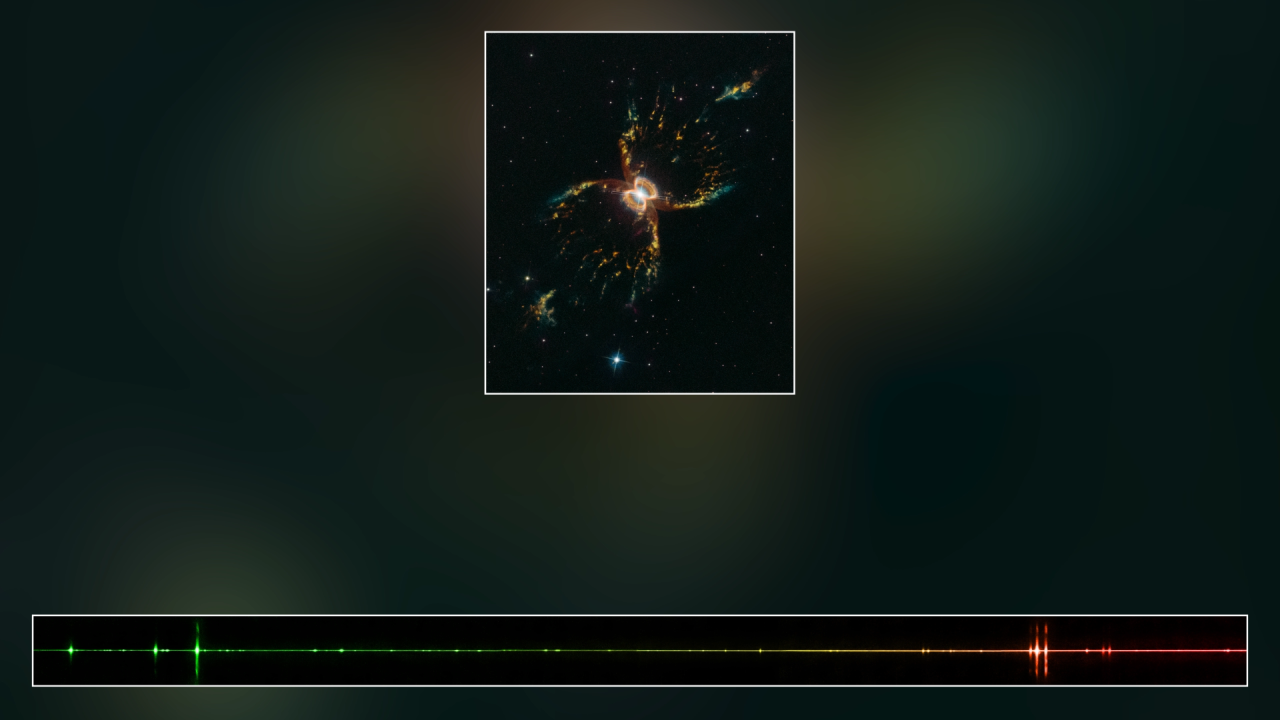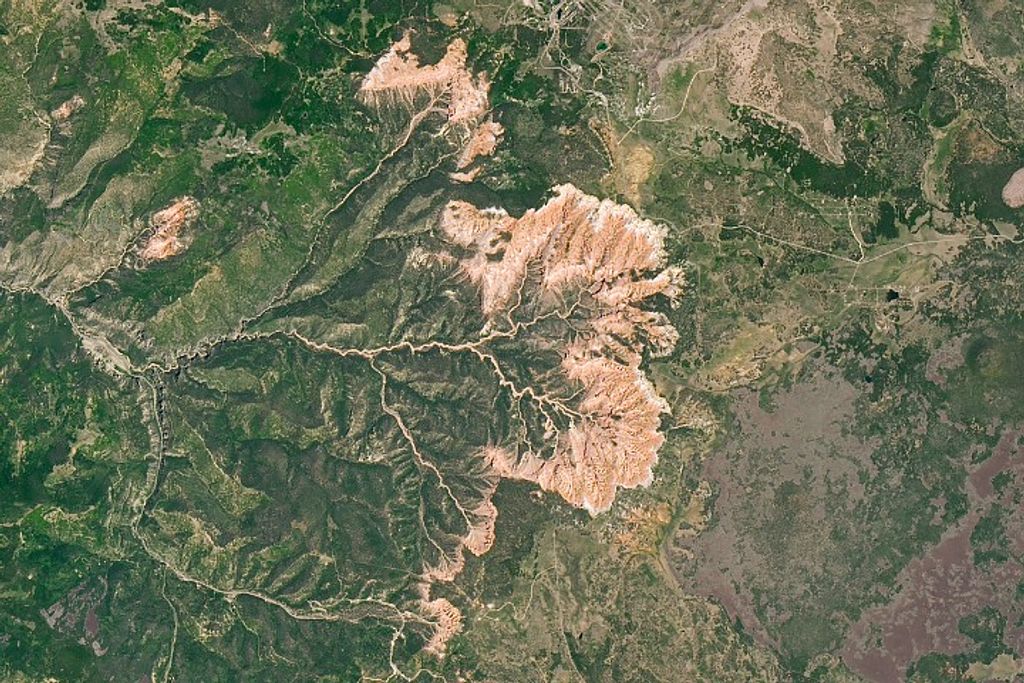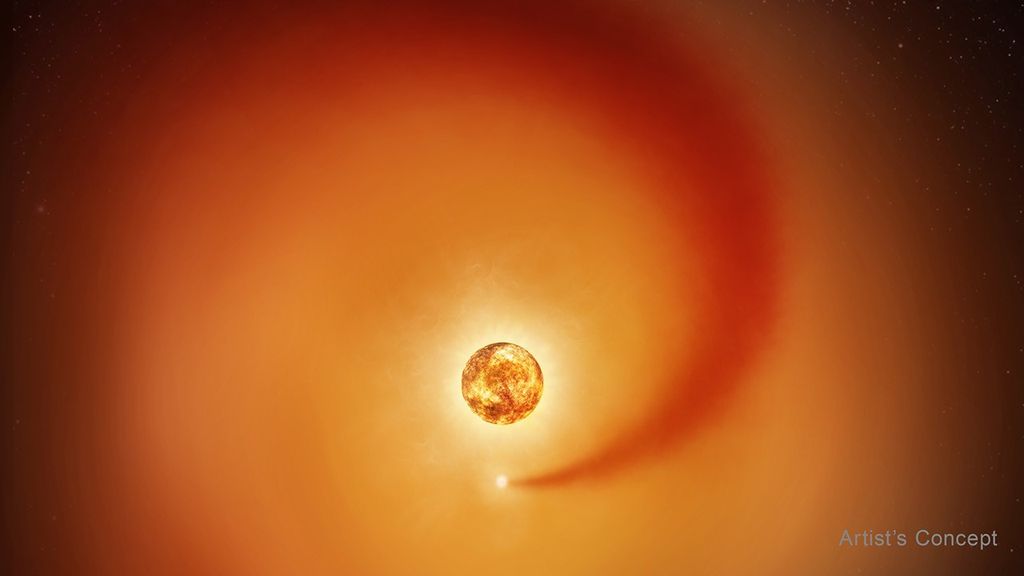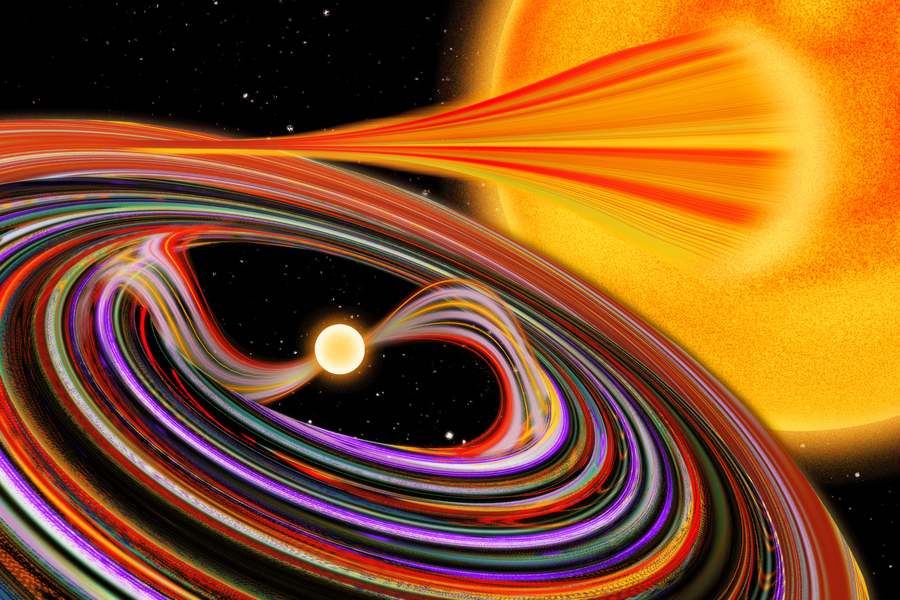1 min read
Colors of the Southern Crab Nebula

Dissecting the Southern Crab Nebula
This diagram illustrates how Hubble Space Telescope spectral observations were used to study the chemical makeup of the Southern Crab Nebula. The hourglass-shaped nebula contains elements forged in the interior of its two aging central stars that were then blasted back into space. Energized by radiation from the pair of bright stars, each of these elements glows in specific colors (or wavelengths) of light. Hubble's Space Telescope Imaging Spectrograph (STIS) divided the light from the nebula's filaments to record the emission from hydrogen, sulfur, oxygen, and nitrogen. The combination of STIS spectroscopy and the image from Hubble's Wide Field Camera 3 shows specifically which gases were detected and how they are distributed in the nebula. The STIS spectrum allows for a better understanding of the nature of the two stars at the nebula's center. Now injected into interstellar space, these elements will be available for future generations of stars, planets, and possibly life. NASA's upcoming James Webb Space Telescope will routinely use spectroscopy to explore a wide range of astronomical research, from exoplanets to the remote universe.
About the Object
- R.A. PositionR.A. PositionRight ascension – analogous to longitude – is one component of an object's position.14:11:52.09
- Dec. PositionDec. PositionDeclination – analogous to latitude – is one component of an object's position.-51:26:24.39
- ConstellationConstellationOne of 88 recognized regions of the celestial sphere in which the object appears.Centaurus
- DistanceDistanceThe physical distance from Earth to the astronomical object. Distances within our solar system are usually measured in Astronomical Units (AU). Distances between stars are usually measured in light-years. Interstellar distances can also be measured in parsecs.10,700 light-years
- DimensionsDimensionsThe physical size of the object or the apparent angle it subtends on the sky.Image is 1.4 arcmin across (about 4.4 light-years).
About the Data
- Data DescriptionData DescriptionProposal: A description of the observations, their scientific justification, and the links to the data available in the science archive.
Science Team: The astronomers who planned the observations and analyzed the data. "PI" refers to the Principal Investigator.The HST observations include those from program 15677. - InstrumentInstrumentThe science instrument used to produce the data.WFC3/UVIS and STIS
- Exposure DatesExposure DatesThe date(s) that the telescope made its observations and the total exposure time.11-14 March 2019
- FiltersFiltersThe camera filters that were used in the science observations.F475W, F502N, F606W, F656N, F658N, F673N, G430M, G750M
- Object NameObject NameA name or catalog number that astronomers use to identify an astronomical object.Southern Crab Nebula; He2-104
- Object DescriptionObject DescriptionThe type of astronomical object.Nebula with symbiotic Mira variable and white dwarf pair
- Release DateApril 18, 2019
- Science ReleaseHubble Celebrates 29th Anniversary with a Colorful Look at the Southern Crab Nebula
- Credit
Downloads

This spectrum covers 4818-7048 Angstroms on Hubble’s STIS instrument, with grisms G430M and G750M. The images are a composite of separate exposures acquired by the WFC3 instrument on the Hubble Space Telescope. Several filters were used to sample narrow wavelength ranges. The color results from assigning different hues (colors) to each monochromatic (grayscale) image associated with an individual filter. In this case, the assigned colors are: Blue: F502N Orange: F656N Green: F658N Red: F673N
Related Images & Videos

Compass Image for Southern Crab Nebula
Image of Southern Crab Nebula, with compass arrows, scale bar, and color key for reference. The north and east compass arrows show the orientation of the image on the sky. Note that the relationship between north and east on the sky (as seen from below) is flipped relative to...

Shape of the Southern Crab Nebula
Diagram of the Southern Crab Nebula Structure This diagram traces the hourglass structure formed by a pair of huge, bipolar gas bubbles ejected by a double star in the center of the Southern Crab Nebula. The gases are dispersed too thinly for the full shape of the hourglass to...

Spectroscopy Animation of Southern Crab Nebula
Dissecting the Southern Crab Nebula This video illustrates how Hubble Space Telescope spectral observations were used to study the chemical makeup of the Southern Crab Nebula. The hourglass-shaped nebula contains elements forged in the interior of its two aging central stars...
Share
Details
Claire Andreoli
NASA’s Goddard Space Flight Center
Greenbelt, Maryland
claire.andreoli@nasa.gov

































